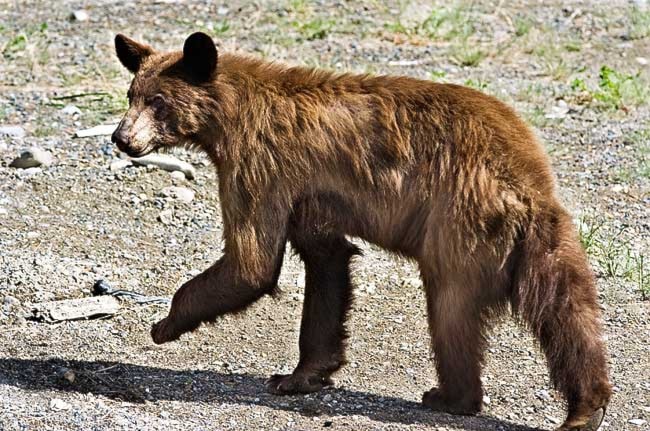Most people killed by black bears were prey - stalked and killed by sneaky male bruins on the hunt.
That comes from a study published earlier this month in the Journal of Wildlife Management.
The finding is something that lead author Steve Herrero has long suspected, but just recently proven.
“I’ve been on to this for quite a while, but this is the first time I’ve had enough data to pull it together to convince my colleagues,” said Herrero, a bear behaviour expert and professor emeritus at the University of Calgary.
While the findings of this latest study are surprising, Herrero said he doesn’t want it to get blown out of proportion.
“These are extremely rare events,” he said. “Most encounters with bears are very pleasant and interesting.”
Because they are so rare, the study had to pull on 110 years of data.
From 1900-2009 there were only 63 people killed by black bears in both the US and Canada.
However most of those attacks - 44 of them - occurred on this side of the border.
The study found that only eight per cent of those attacks were from mother bears with cubs.
The vast majority were predatory attacks by lone male bears.
“The female bears that make so much noise and sound like there going to tear you to pieces just about never follow through with actual attacks on human beings,” said Herrero. “They’re just asking for more space and if you back away and give them their space things look pretty good.”
If a bear is hunting it acts quite differently.
“Predatory bears are a silent stalking animal that you certainly find close to you,” said Herrero. “A bear that is fixated on you, is persistent in coming toward you and it’s not making noise, it’s not trying to warn you that it’s feeling stressed, it’s considering you as potential prey.”
Identifying that behaviour is key, because deterring a predatory bear takes a completely different set of actions.
“If ever you are pushed or followed by what you think is not a stressed bear but a potentially predacious bear you must act aggressively toward the bear and get your deterrents ready - pepper spray or firearms” he said.
The study also found that the number of fatal attacks has been on the rise every decade since 1960.
“The increase is slight, but it’s directly proportional to the increase in the human population,” said Herrero. “We think that the main variable driving it is more people out in bear habitat doing more things, both working and playing.”
While statistically they may be on the rise, anecdotally, Yukon conservation officer Ken Knutson, hasn’t noticed an increase.
“Many more people are killed and injured in dog attacks,” he said.
While attacks are very rare, the chances of even encountering a bear are slight, he said.
For the most part they want to avoid people.
“They don’t like to waste energy,” said Knutson. “Their whole gig is to try to reduce the amount of energy they consume to what they take in.
When they have an encounter with a human it causes stress and it costs them energy.”
The biggest problem is when bears get a taste for human food.
“They only seek out people when they learn they get a reward, like food, so it’s important that people take precautions,” said Knuston.
He recommends locking coolers and food in the car, or putting it where bears can’t get it.
“You don’t want to set up a situation where someone gets hurt because of the actions you take or didn’t take,” he said.
Like any wild animals, bears can be dangerous. This latest study should be cause for concern, said Herrero.
If you run into a bear in the woods, he’s got some simple advice.
“Avoid surprising them, avoid stressing them - relax and enjoy them.”
Contact Josh Kerr at
joshk@yukon-news.com
